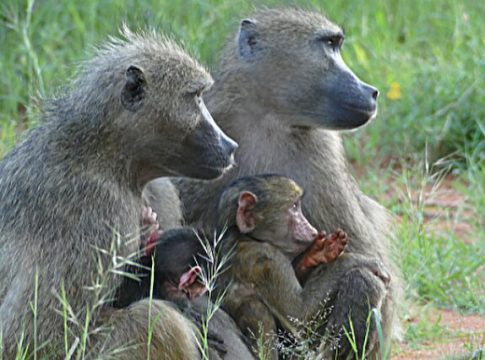Understanding the Impact of Human Persecution on Animal Behavior: Insights from Chacma Baboons
Recent research sheds light on how human actions profoundly affect wildlife, particularly focusing on a group of chacma baboons in Alldays, South Africa. This study, conducted by Dr. Mokhlesur Rahman at Durham University, offers valuable insights into the emotional and physiological toll that human violence can impose on animals.
The Effects of Human Violence
When two baboons were fatally shot, the rest of the group exhibited significant changes in their behavior and emotional state. This research marks a significant advancement in our understanding of how human-induced mortality can lead to anxiety and stress among surviving animals. Notably, the surviving baboons showed:
-
Increased Anxiety: Observations indicated a rise in self-scratching behaviors, a well-documented sign of anxiety in primates. This physical manifestation of stress mirrors what many of us experience in stressful situations—a reflected need for self-soothing.
- Behavioral Changes: The baboons adapted dramatically by altering their travel patterns. They began to venture further and faster away from their sleeping site, ultimately abandoning this location altogether to avoid potential danger. This change mirrors how individuals may withdraw from places or people that have caused distress.
The Physiological Response
To complement behavioral observations, researchers also analyzed the baboons’ stool samples. They found elevated levels of glucocorticoid, a hormone associated with stress, persisting for weeks after the events. Such physiological responses highlight that the impact of trauma is not merely emotional; it translates into our bodies as well.
The Importance of Environment
Interestingly, despite their experiences with human violence, the baboons maintained a stable relationship with the workers at the nearby garbage dump, indicating that they could discern non-threatening beings within their environment. This suggests a level of resilience and adaptability, reminding us that, under stress, creating safe spaces and recognizing sources of support can help mitigate anxiety.
Takeaways for Human Interaction with Nature
The findings from this study urge us to reflect on our relationship with the natural world. As human populations expand into wildlife habitats, awareness of the psychological and physiological consequences of our actions becomes increasingly vital. Compassionate coexistence with wildlife can promote healthier ecosystems for both animals and humans alike.
Practical Insights for Personal Well-Being
While this research focuses on baboons, it resonates with our experiences regarding stress and anxiety. Here are a few strategies to manage feelings of anxiety in our own lives:
-
Recognize Your Signs of Stress: Just as self-scratching was an indicator for the baboons, becoming aware of your physical signs of anxiety—like restlessness, increased heart rate, or changes in sleeping patterns—can help you address it more efficiently.
-
Create Safe Spaces: Identify locations or situations that make you feel secure. Surrounding yourself with supportive people or finding tranquil environments can offer solace during stressful times.
- Acknowledge Your Needs: Understanding when you need to withdraw from certain stressful situations, akin to the baboons avoiding certain areas, can be a healthy response to anxiety.
By fostering awareness of both our needs and those of the creatures with whom we share the planet, we cultivate a more compassionate and interconnected world—one that enhances the well-being of all.

Covers wellness, nutrition, mental health, and daily life tips.
Bio: Talia brings a background in health journalism and holistic living to help readers live better, one tip at a time.

